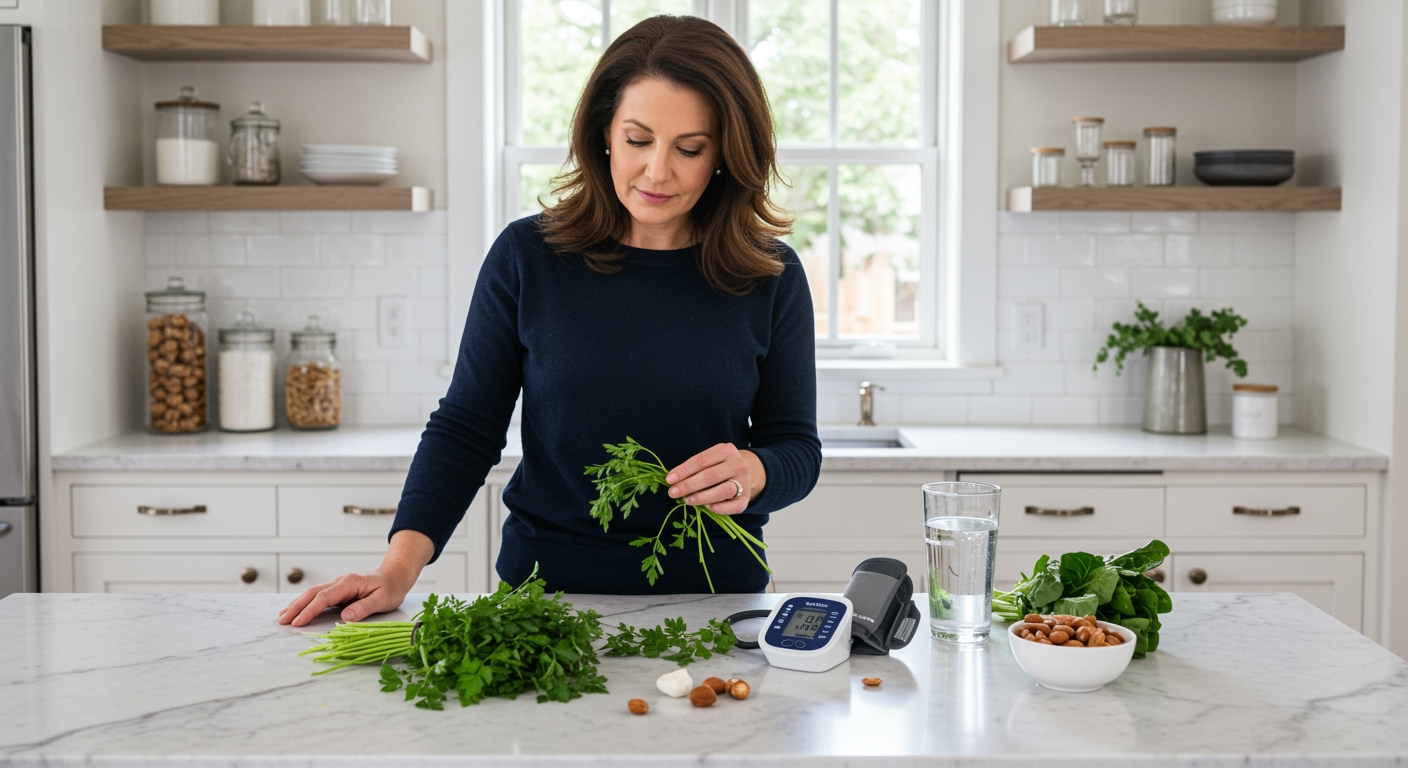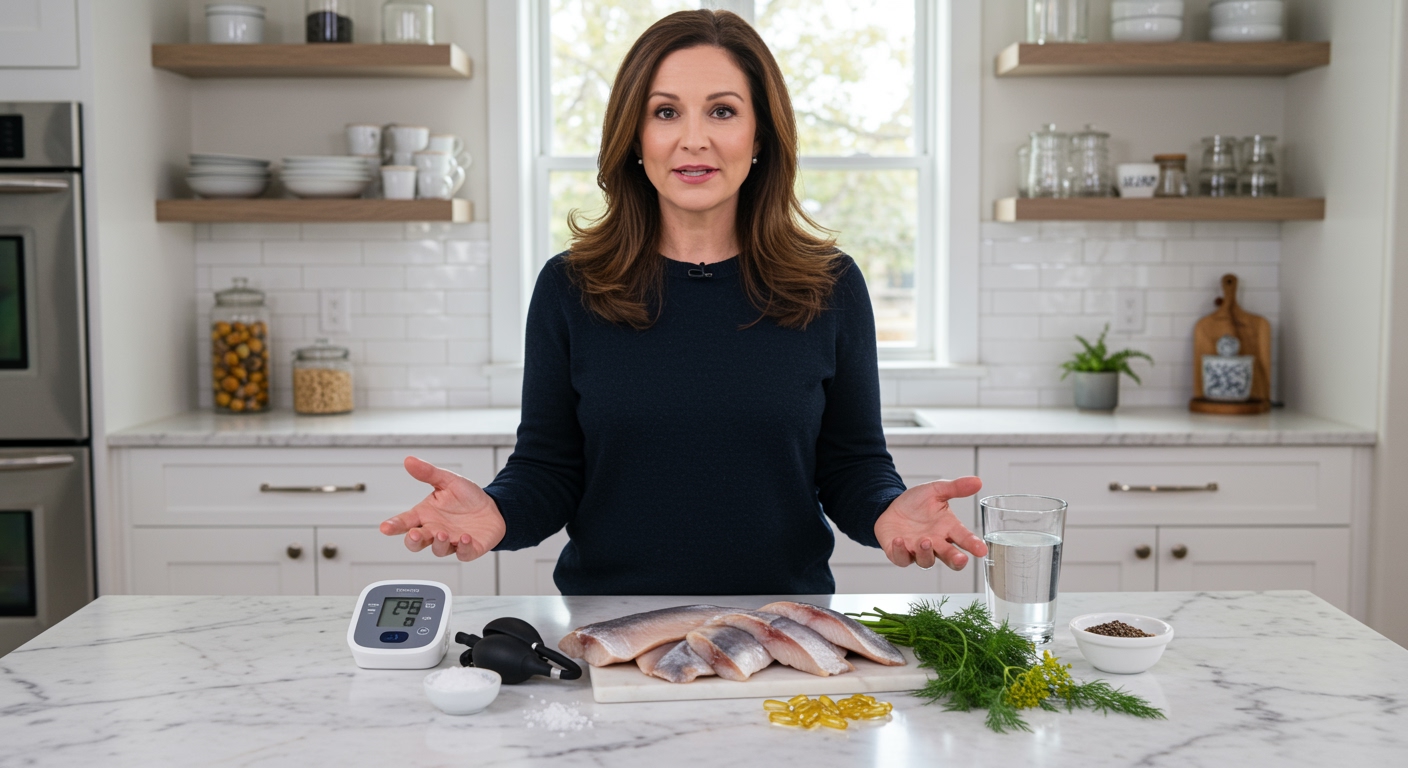✪ Key Takeaway: Chervil is generally safe for low blood pressure patients and may even provide mild cardiovascular benefits.
Introduction
You reach for that delicate chervil in your spice rack and suddenly wonder if it will make your already low blood pressure drop even further.
This concern makes perfect sense because managing low blood pressure means being careful about everything you consume, especially herbs that might affect your cardiovascular system.
Hi, I am Abdur, your nutrition coach and today I am going to explain whether chervil poses any risks for people with low blood pressure and how you can use it safely.
What Exactly Is Chervil And How Does It Work?
Chervil belongs to the parsley family and contains antioxidants that support overall cardiovascular health.
This delicate herb contains compounds called flavonoids and essential oils that provide its distinctive anise-like flavor.
Unlike some herbs that dramatically affect blood pressure, chervil works gently on your cardiovascular system.
The herb contains potassium, which helps maintain proper fluid balance in your body without causing sudden blood pressure changes.
Research shows that chervil has mild diuretic properties, meaning it helps your kidneys remove excess water and sodium from your bloodstream.
However, this diuretic effect is so gentle that it rarely causes significant blood pressure drops in healthy individuals.
✪ Fact: Chervil contains about 4,740 mg of potassium per 100 grams, supporting healthy blood pressure regulation.
Does Chervil Lower Blood Pressure Dangerously?
The short answer is no – chervil does not cause dangerous blood pressure drops in most people.
Clinical studies on herbs similar to chervil show that culinary amounts rarely produce significant cardiovascular effects.
When you use chervil as a seasoning, you typically consume less than one teaspoon per meal, which contains minimal active compounds.
Your body processes these small amounts easily without overwhelming your cardiovascular system or causing hypotensive episodes.
However, consuming large medicinal doses of chervil extract or supplements could potentially affect blood pressure more noticeably.
The key difference lies in concentration – fresh or dried chervil used in cooking contains much lower levels of active compounds than concentrated extracts.
✪ Pro Tip: Start with small amounts of chervil and monitor how your body responds before increasing usage.
Can Chervil Actually Help With Low Blood Pressure?
Surprisingly, chervil might actually provide benefits for people managing low blood pressure conditions.
The herb contains iron and folate, two nutrients that support healthy red blood cell production and circulation.
Better circulation helps ensure adequate blood flow reaches all parts of your body, which can improve symptoms associated with low blood pressure.
Chervil also provides magnesium, which supports proper heart muscle function and helps maintain steady heart rhythm.
The antioxidants in chervil protect your blood vessels from damage and help maintain their elasticity for better blood flow.
Additionally, the mild diuretic effect can help reduce any fluid retention that might be masking your true blood pressure readings.
✪ Note: Chervil provides about 3.9 mg of iron per 100 grams, supporting healthy blood oxygen transport.
How Should You Use Chervil With Low Blood Pressure?
The safest approach is using chervil as a culinary herb rather than a medicinal supplement.
Add fresh chervil to salads, soups, or egg dishes in moderate amounts – typically one to two teaspoons per serving.
Dried chervil works well in herb blends and seasoning mixes, providing flavor without overwhelming your system.
Always monitor your blood pressure regularly when introducing any new herb into your routine, even gentle ones like chervil.
If you take medications for low blood pressure or other cardiovascular conditions, discuss herb usage with your healthcare provider.
Avoid chervil supplements or concentrated extracts unless specifically recommended by a qualified healthcare professional.
Remember that consistency matters more than quantity – using small amounts regularly provides better benefits than occasional large doses.
✪ Pro Tip: Combine chervil with other heart-healthy herbs like parsley and dill for maximum nutritional benefit.
When Should You Avoid Chervil Completely?
Certain situations require complete avoidance of chervil, even in small culinary amounts.
If you experience severe hypotension with systolic readings below 90 mmHg, avoid all herbs with potential cardiovascular effects.
People taking multiple blood pressure medications should be especially cautious about adding any herbs to their diet.
Those with kidney disease need to limit potassium intake, making chervil a potential concern due to its high potassium content.
If you have allergies to plants in the carrot family, including parsley, celery, or fennel, avoid chervil completely.
Pregnant women with low blood pressure should consult healthcare providers before using any herbs, including chervil.
✪ Note: Always prioritize medical advice over herbal remedies when managing serious cardiovascular conditions.
The Bottom Line
Chervil is generally safe for people with low blood pressure when used in normal culinary amounts and may even provide mild cardiovascular benefits.
Your health journey should never be about fear but about making informed choices that support your wellbeing.
I would love to hear about your experiences with herbs and low blood pressure management – please share your questions or thoughts in the comments below.
References
At NutritionCrown, we use quality and credible sources to ensure our content is accurate and trustworthy. Below are the sources referenced in creating this article:
- Vinmec: Diet for People with Low Blood Pressure
- Fyne Herbs: Chervil: Not Just a Fine Herb – The Top 5 Medicinal Uses
- Healthline: Herbs to Lower Blood Pressure
- Healthline: Low Blood Pressure Diet





